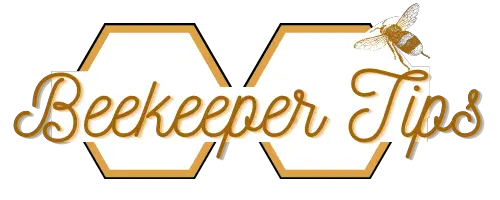In days gone by, we wrapped hives for winter in tar paper to prepare for winter. Now, this tried and tested method still works, but we have so many amazing new technologies we can use as well. Let us take a look at a few new solutions, and a few tried and tested solutions to winterizing our bees with beehive winter covers and other solutions.
Table of Contents
Beehive Winter Covers
Winter is a less pleasant time for bees and as beekeepers, we have to use our access to technology to help our little friends make it through winter in the best state possible. In this regard, we have two main types of beehive winter covers that we can apply.
Beehive Winter Wrap
Beehive winter wrap consists of some sort of material that we wrap around the hives. Typically this material is black to allow some thermal heat gain on sunny days. The material is not an insulator in any way. We will go into how a beehive winter wrap works shortly.
Insulation For Beehives/Insulated Wrap
Note that this is different from a winter wrap. Using insulation wraps, or boards on hives can significantly reduce heat losses in a hive. Because these materials are insulators, they will also significantly reduce heat gain in the hive on sunny days.
What Is An Insulator?
In the sense of heat retention, an insulator is a material that resists the passage of heat through it. There are many types of insulators out there, with the most commonly used in beekeeping tending to be insulation boards. Modern insulation materials consist of polymeric substances with very low thermal conductivity.
Read more about:Â Winter Bee Feeding Recipe
Polystyrene
There are many articles on the internet about how to use polystyrene insulation. Polystyrene is an incredible insulator – it is also a major pollutant. There are many studies that show that polystyrene breaks down over time into nano plastics and that these have biological activity. Using polystyrene boards to clad the outside of a hive seems unwise.
I have tried this and found that the bees will crawl outside on warm days and chew little holes in the board, releasing small pieces of plastic into the surroundings. These plastics will most likely also end up on the surface of the bees and become microplastics in the hive. We don’t know exactly what the outcome of this is, but it seems that the chances are it will be bad.
However, you can relatively safely include polystyrene boards in the lid of your hive to add extra insulation. Just ensure that there is no way the bees can get to it as they will chew it up.
Green Insulation
There is considerable research and growth in the market for alternative, more environmentally friendly insulation products. This appears to be an area in which the technologies are still maturing, and in a few years’ time, there may be a viable environmentally friendly insulation material that is easy to use in a beehive. Of course, there is that age-old product we have used called “wood” which is a moderate insulator!
Winter Wrap For Beehives
Wrapping hives with tar paper is an age-old winter preparation trick. Tar paper is a type of felt paper that has been soaked in a tar substance. The nomenclature around this is somewhat confusing, as there are slightly different names depending on the exact type of tar and paper used. Since the various oil shocks that have happened in the past decades, the original 15# tar paper has become thinner and thinner and definitely does not weigh 15lb/100 sq feet anymore. Various brands of this paper exist – sadly due to the post-COVID global mess, we cannot find Tar paper on Amazon anymore, but you can order from a place such as this or buy from your local hardware shop.
How To Wrap A Hive With Tar Paper
Each person has their own way of doing this. If you look on the internet there are thousands of videos of people stapling tar paper to their hives. I personally get really angry when anybody staples my hives, the small holes that staples and pins make in wood invite fungus. Once we have fitted our winter lids and feeding boards it is time to wrap the hives.
My method is to use packing tape to wrap right around the hive and tape the sheeting to the hive. As mentioned, people often staple the paper to the hive – this definitely reduced the working life of the beehives and should be avoided. Once you have covered the hive, cut the top entrance with a knife so the bees can get in and out.
Why Do We Wrap Hives If The Wrap Is Not An Insulator?
Wrapping a hive with a black felt paper-type product causes the hive to absorb a bit of solar energy during the day. This can increase the temperature in the hive by a few degrees. This small increase in temperature helps the bees move around the cluster. If you are keeping a race of bees that are light propolizers, they may also not have sealed the hive up properly in fall. The paper helps cover cracks and chinks in the hive where cold winter gales can blow into the hive.
In this regard, the wrap is more of a sealer and solar collector than an insulator.
Insulated Beehives
There are a few options for ready-built hives that include insulation in their design. This unit by Apimaye is pretty amazing. I always enjoy Apimaye products as they are well designed and built. My first Apimaye acquisition was a set of small mating boxes for queen bees – these have lasted nearly 20 years – a testament to good design and material use.
These insulated hives have the advantage of being designed to allow bees to thrive in freezing conditions and to employ the same insulation to enable bees to thrive in boiling hot summer weather.
An alternative unit is this kit. I have not personally used this kit, but a friend of mine has twenty of these hives in Ireland and sent me photographs of the hives in operation. Her region has a generally miserable climate and she does very well with her bees. It appears that the plastic helps greatly reduce the sticking of frames to the box as compared to her conventional wooden hives.
We hope this article helped you evaluate a few options to keep your bees warm and happy in cold winters. If you enjoyed it, please share.

Dr. Garth A. Cambray is a Canadian/South African entrepreneur and beekeeper with 28 years of experience in apiculture and specializes in adding value to honey. His Ph.D. research developed a new advanced continuous fermentation method for making mead that has resulted in a number of companies globally being able to access markets for mead. His company, Makana Meadery, exports honey mead to the USA where it is available to discerning connoisseurs. He has also developed technologies to commercially manufacture organic honey vinegar in Zambia for export globally. He holds a few patents globally in the ethanol industry and believes in technology and knowledge transfer for human development and environmental sustainability. One of his proudest achievements is the fact that the wind farm he started at one of his old apiary sites has essentially made his hometown carbon neutral.



